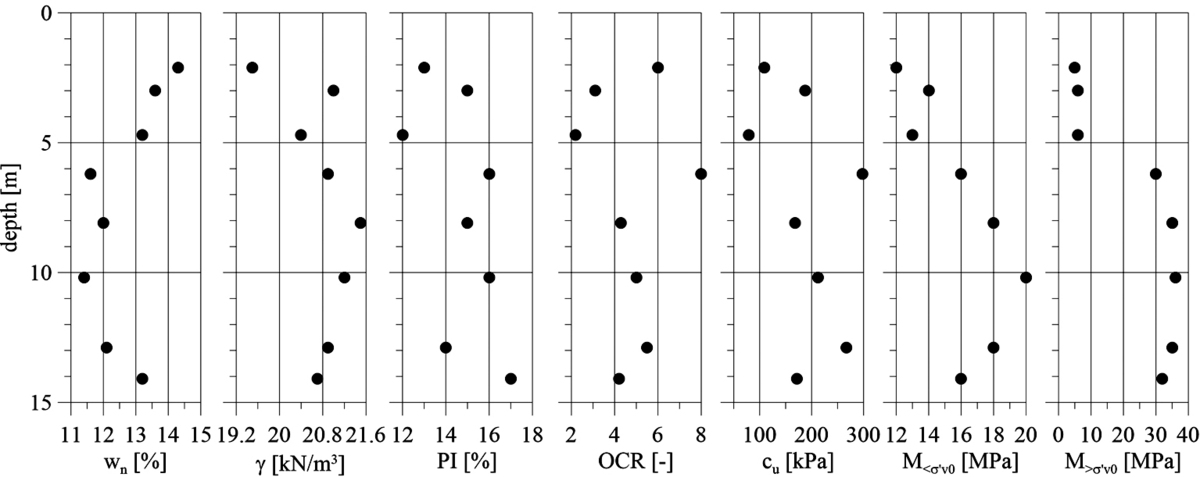Mechanical properties of soils in internal waste bank of lignite mines and their primary characteristics
1
Institute of Geology, Adam Mickiewicz University in Poznań, Poland
Submission date: 2023-05-08
Acceptance date: 2023-05-16
Publication date: 2024-06-19
Corresponding author
Jedrzej Wierzbicki
Institute of Geology, Adam Mickiewicz University in Poznań, ul. Bogumiła Krygowskiego 12, 61-680, Poznań, Poland
Institute of Geology, Adam Mickiewicz University in Poznań, ul. Bogumiła Krygowskiego 12, 61-680, Poznań, Poland
Archives of Civil Engineering 2024;70(2):135-148
KEYWORDS
TOPICS
ABSTRACT
The modern development of urban areas is related to, among others, the location of industrial facilities on the outskirts of cities. More and more often, commercial buildings are founded on areas that have not been used for construction so far. Such areas include, among others: reclaimed lignite mine banks in the Konin region. The man-made soil is a chaotic mixture of fragments of glacial tills and Pliocene clays, often exceeding 20 m in thickness, which is naturally consolidated over time. Due to the method of formation of the embankment, despite the fact that banks are made of natural soil, their strength and deformation characteristics clearly differ from those characteristic of lithologically similar soils deposited as a result of geological processes. In this case, the use of a standard test approach may overestimate the strength and stiffness of the soil.
Due to the complex structure of the bank in-situ tests were used for geotechnical exploration: CPTU and FVT, as well as laboratory tests in a triaxial apparatus and an oedometer. The results were compared with the results of studies conducted in similar naturally deposited soils. The obtained results provide valuable geotechnical characteristics of the embankment soil. The obtained results indicate a relatively small change in the geotechnical properties of the soils incorporated into the embankment within individual clasts of the natural soil (on a local scale) and a clear deterioration in the scale of the entire embankment, treated as the impact zone of building structures.
Share
RELATED ARTICLE
We process personal data collected when visiting the website. The function of obtaining information about users and their behavior is carried out by voluntarily entered information in forms and saving cookies in end devices. Data, including cookies, are used to provide services, improve the user experience and to analyze the traffic in accordance with the Privacy policy. Data are also collected and processed by Google Analytics tool (more).
You can change cookies settings in your browser. Restricted use of cookies in the browser configuration may affect some functionalities of the website.
You can change cookies settings in your browser. Restricted use of cookies in the browser configuration may affect some functionalities of the website.




